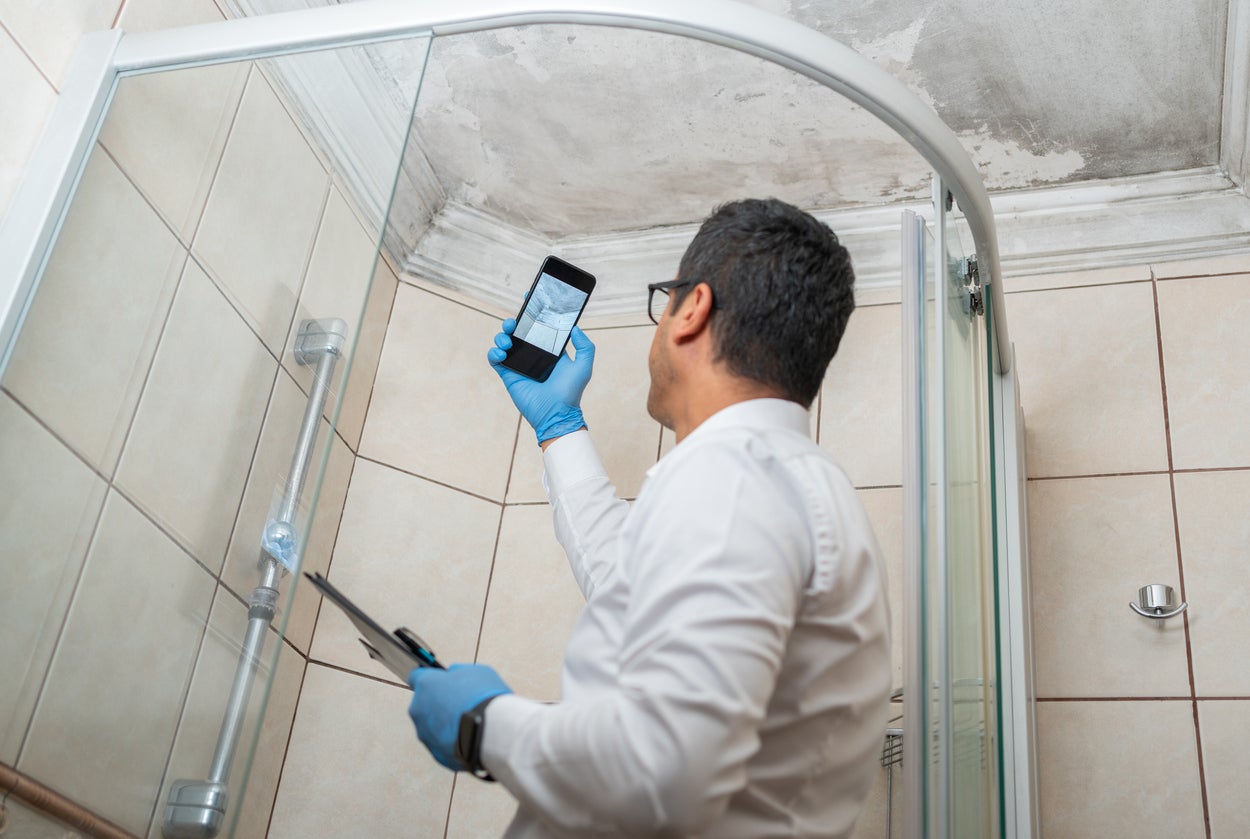Important Actions After Mold Remediation
Specialist Tips for Post Mold Removal Success
In the realm of mold and mildew remediation, efficiently eliminating mold and mildew is only half the fight; the true obstacle lies in stopping its reappearance. By adhering to experienced tips and best techniques, individuals can secure their spaces versus mold resurgence and keep a healthy indoor setting.
Screen Moisture Degrees Routinely
After completing mold and mildew remediation treatments, keeping optimum humidity degrees is crucial to stop mold and mildew re-growth and ensure a healthy interior environment. High moisture degrees over 60% develop a favorable environment for mold to thrive, making normal checking a proactive action to stop any type of future mold problems.
Using hygrometers or moisture meters can aid in properly determining moisture degrees in various areas of the home. These devices provide real-time data that allows removal experts to make educated choices concerning air flow, dehumidification, and various other needed activities to preserve perfect moisture degrees post-remediation. Furthermore, developing a regular timetable for moisture checks, especially in risky locations such as kitchens, shower rooms, and cellars, is an aggressive method to mold avoidance. By constantly keeping track of moisture degrees, homeowner can efficiently mitigate the danger of mold and mildew reoccurrence and preserve a healthy interior environment post-remediation.
Conduct Thorough Inspections Post-Remediation
Complying with the conclusion of mold and mildew remediation treatments, it is critical to conduct extensive inspections to validate the effectiveness of the removal procedure. These post-remediation inspections are important in ensuring that the mold issue has been successfully dealt with which there is no recurrence or staying mold and mildew development. Assessments need to be performed by qualified specialists who have experience in determining mold and mildew and examining indoor air high quality.
During these assessments, numerous techniques such as aesthetic assessments, air tasting, and surface area sampling may be employed to thoroughly assess the remediated locations. Visual evaluations entail an in-depth evaluation of the properties to look for any type of visible indicators of mold and mildew development or water damage. Air sampling helps in determining the airborne mold and mildew spore degrees, while surface area sampling can find mold and mildew fragments on surface areas.
Implement Proper Ventilation Approaches
After making certain the performance of the mold and mildew removal process via thorough evaluations, the following crucial action is to concentrate on applying correct air flow approaches. Adequate air flow is important in avoiding mold and mildew reoccurrence by regulating dampness levels and promoting air circulation. To accomplish this, it is advised to use exhaust fans in locations prone to high moisture, such as washrooms and kitchen areas. Additionally, opening up doors and windows when climate allows can help improve air movement and lower wetness accumulation. Air purifiers and dehumidifiers are likewise useful devices in maintaining optimum indoor air top quality.
Appropriate ventilation not only help in stopping mold development yet likewise adds to the overall health and convenience of owners. By making certain ample ventilation throughout the residential or commercial property, you can minimize the risk of mold and mildew regrowth and create a healthier living setting.

Use Mold-Resistant Materials for Fixes
To enhance the long-lasting effectiveness of mold removal efforts, including mold-resistant products for repair services Our site is important in reducing the risk of future mold development. Mold-resistant materials are designed to stand up to wetness and inhibit mold growth, making them an important selection for areas vulnerable to wetness and humidity. When repairing areas affected by mold, using materials such as mold-resistant drywall, mold-resistant paints, and mold-resistant caulking can aid prevent mold and mildew recurrence.
Mold-resistant drywall is an outstanding alternative to traditional drywall in areas like cellars and shower rooms where moisture levels are greater. This kind of drywall has a special coating that resists mold and mildew development also when subjected to damp problems. Additionally, making use of mold-resistant paints including antimicrobial representatives can further prevent mold development on walls and ceilings.
In areas where dampness prevails, such as bathrooms and cooking areas, making use of mold-resistant caulking around bathtubs, sinks, and windows can aid seal out water and protect against mold from holding in fractures and crevices. By buying these mold-resistant materials throughout repair services post-remediation, you can significantly decrease the possibility of future mold and mildew concerns and preserve a healthier indoor setting.
Maintain Tidiness and Address Water Issues
After mold and mildew remediation, it is vital to maintain a clean environment to prevent the regrowth of mold and mildew. Leaks, water breach, or high moisture degrees can create the perfect breeding ground for mold and mildew, so it is crucial to take care of any water-related troubles quickly.
To maintain cleanliness, think about using HEPA filters in vacuums and air purifiers to catch mold and mildew spores and avoid their circulation in the air. Furthermore, guaranteeing correct air flow in areas prone to moisture accumulation, such as kitchens and washrooms, can aid keep moisture degrees in check. By remaining vigilant concerning cleanliness and attending to water concerns immediately, you can successfully protect against mold and mildew reinfestation and maintain a healthy interior setting.
Final Thought

In the realm of mold removal, successfully eliminating mold and mildew is only half the fight; the true difficulty exists in avoiding its reappearance. After finishing find out this here mold removal procedures, maintaining optimal humidity degrees is critical to avoid mold re-growth and ensure a healthy indoor environment. High humidity levels above 60% create a favorable atmosphere for mold and mildew to flourish, making regular keeping an eye on an aggressive measure to protect against any type of future mold concerns.
To enhance the lasting performance of mold removal efforts, incorporating mold-resistant products for repair work is crucial in reducing the risk of future mold and mildew development. After mold remediation, it is essential to keep a clean setting to avoid the regrowth of mold and mildew.